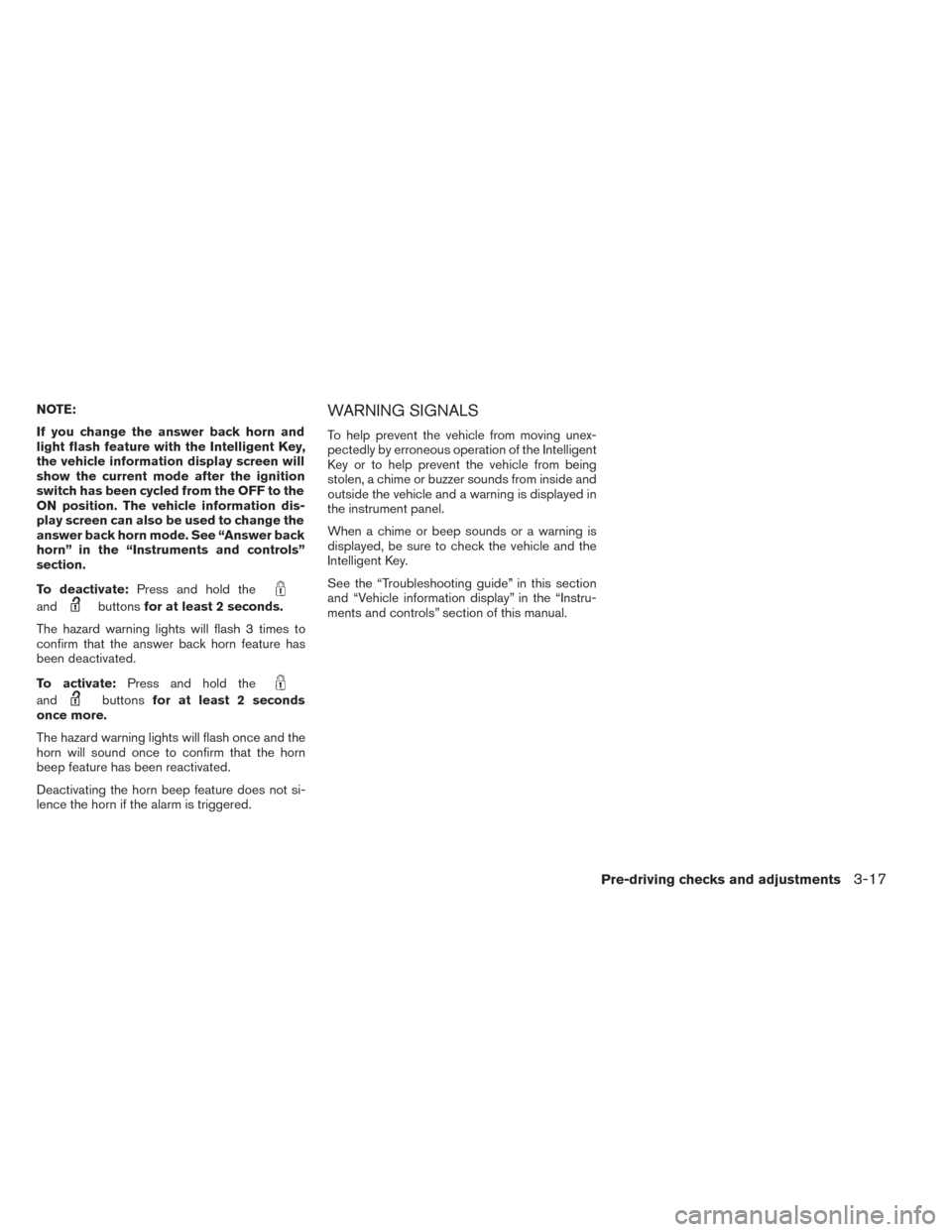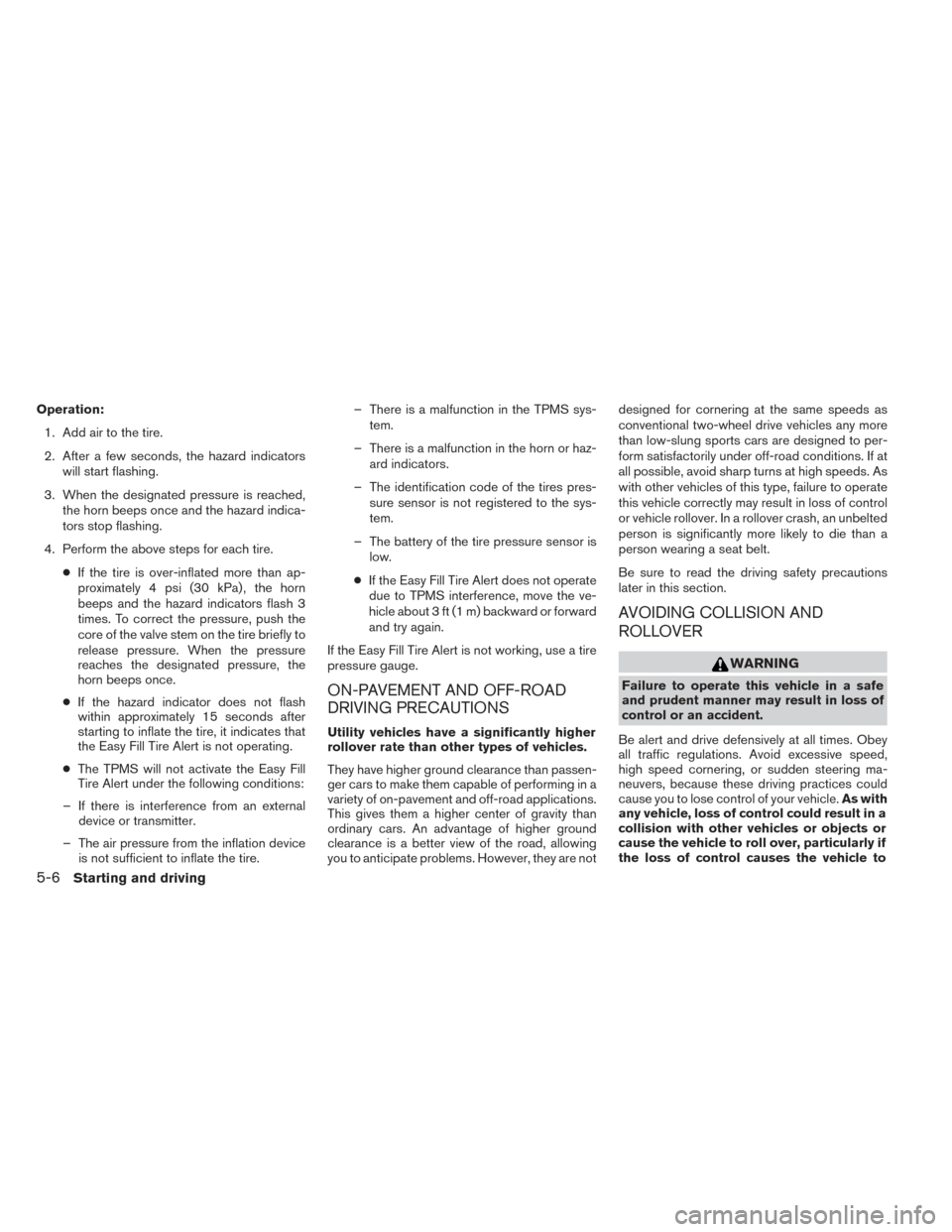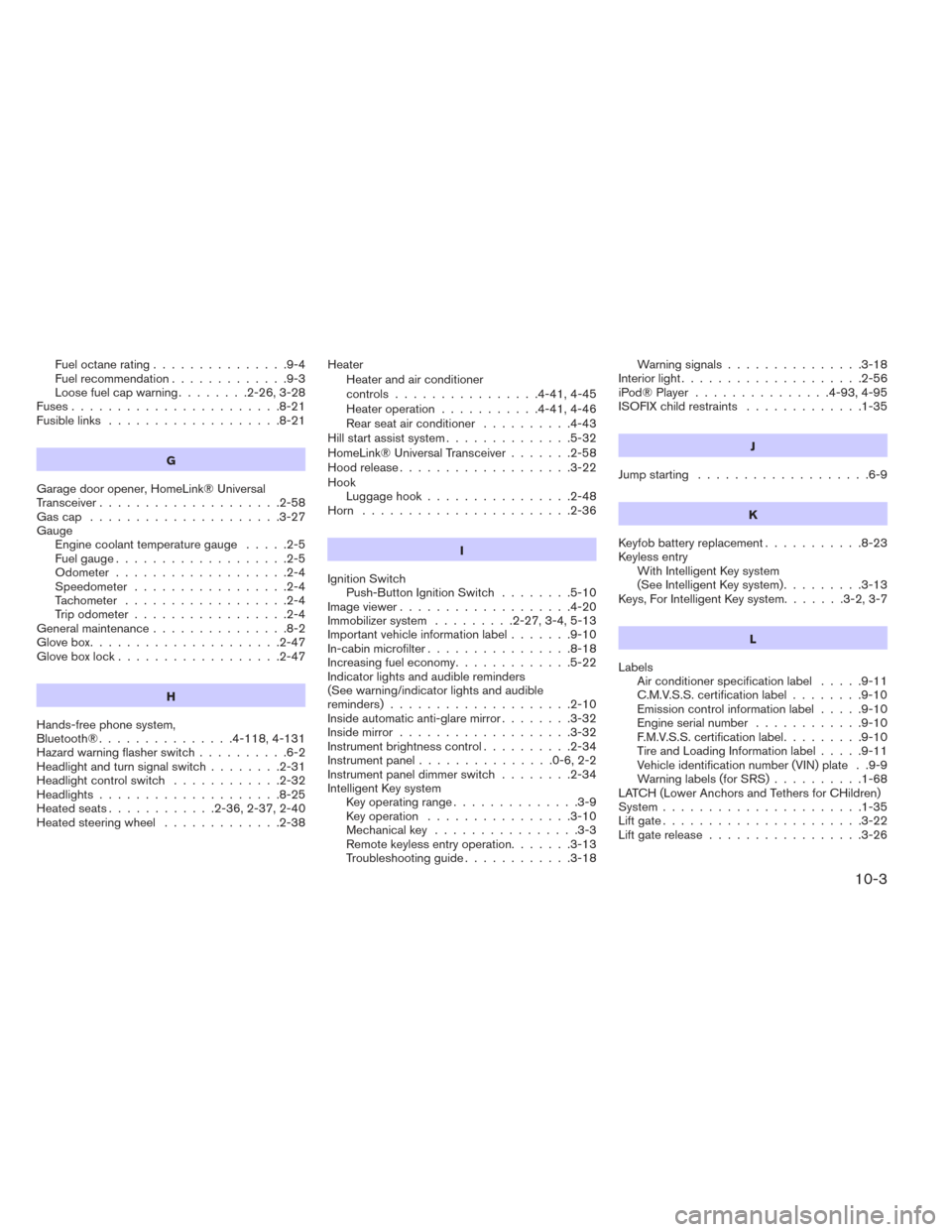Page 168 of 492

NOTE:
If you change the answer back horn and
light flash feature with the Intelligent Key,
the vehicle information display screen will
show the current mode after the ignition
switch has been cycled from the OFF to the
ON position. The vehicle information dis-
play screen can also be used to change the
answer back horn mode. See “Answer back
horn” in the “Instruments and controls”
section.
To deactivate:Press and hold the
andbuttonsfor at least 2 seconds.
The hazard warning lights will flash 3 times to
confirm that the answer back horn feature has
been deactivated.
To activate: Press and hold the
andbuttonsfor at least 2 seconds
once more.
The hazard warning lights will flash once and the
horn will sound once to confirm that the horn
beep feature has been reactivated.
Deactivating the horn beep feature does not si-
lence the horn if the alarm is triggered.
WARNING SIGNALS
To help prevent the vehicle from moving unex-
pectedly by erroneous operation of the Intelligent
Key or to help prevent the vehicle from being
stolen, a chime or buzzer sounds from inside and
outside the vehicle and a warning is displayed in
the instrument panel.
When a chime or beep sounds or a warning is
displayed, be sure to check the vehicle and the
Intelligent Key.
See the “Troubleshooting guide” in this section
and “Vehicle information display” in the “Instru-
ments and controls” section of this manual.
Pre-driving checks and adjustments3-17
Page 359 of 492

Operation:1. Add air to the tire.
2. After a few seconds, the hazard indicators will start flashing.
3. When the designated pressure is reached, the horn beeps once and the hazard indica-
tors stop flashing.
4. Perform the above steps for each tire. ●If the tire is over-inflated more than ap-
proximately 4 psi (30 kPa) , the horn
beeps and the hazard indicators flash 3
times. To correct the pressure, push the
core of the valve stem on the tire briefly to
release pressure. When the pressure
reaches the designated pressure, the
horn beeps once.
● If the hazard indicator does not flash
within approximately 15 seconds after
starting to inflate the tire, it indicates that
the Easy Fill Tire Alert is not operating.
● The TPMS will not activate the Easy Fill
Tire Alert under the following conditions:
– If there is interference from an external device or transmitter.
– The air pressure from the inflation device is not sufficient to inflate the tire. – There is a malfunction in the TPMS sys-
tem.
– There is a malfunction in the horn or haz- ard indicators.
– The identification code of the tires pres- sure sensor is not registered to the sys-
tem.
– The battery of the tire pressure sensor is low.
● If the Easy Fill Tire Alert does not operate
due to TPMS interference, move the ve-
hicle about 3 ft (1 m) backward or forward
and try again.
If the Easy Fill Tire Alert is not working, use a tire
pressure gauge.
ON-PAVEMENT AND OFF-ROAD
DRIVING PRECAUTIONS
Utility vehicles have a significantly higher
rollover rate than other types of vehicles.
They have higher ground clearance than passen-
ger cars to make them capable of performing in a
variety of on-pavement and off-road applications.
This gives them a higher center of gravity than
ordinary cars. An advantage of higher ground
clearance is a better view of the road, allowing
you to anticipate problems. However, they are not designed for cornering at the same speeds as
conventional two-wheel drive vehicles any more
than low-slung sports cars are designed to per-
form satisfactorily under off-road conditions. If at
all possible, avoid sharp turns at high speeds. As
with other vehicles of this type, failure to operate
this vehicle correctly may result in loss of control
or vehicle rollover. In a rollover crash, an unbelted
person is significantly more likely to die than a
person wearing a seat belt.
Be sure to read the driving safety precautions
later in this section.
AVOIDING COLLISION AND
ROLLOVER
WARNING
Failure to operate this vehicle in a safe
and prudent manner may result in loss of
control or an accident.
Be alert and drive defensively at all times. Obey
all traffic regulations. Avoid excessive speed,
high speed cornering, or sudden steering ma-
neuvers, because these driving practices could
cause you to lose control of your vehicle. As with
any vehicle, loss of control could result in a
collision with other vehicles or objects or
cause the vehicle to roll over, particularly if
the loss of control causes the vehicle to
5-6Starting and driving
Page 486 of 492

Fueloctanerating...............9-4
Fuel recommendation.............9-3
Loosefuelcapwarning........2-26,3-28
Fuses.......................8-21
Fusiblelinks ...................8-21
G
Garage door opener, HomeLink® Universal
Transceiver....................2-58
Gascap .....................3-27
Gauge Engine coolant temperature gauge .....2-5
Fuel gauge ...................2-5
Odometer ...................2-4
Speedometer .................2-4
Tachometer ..................2-4
Trip odometer .................2-4
Generalmaintenance...............8-2
Glovebox.....................2-47
Gloveboxlock..................2-47
H
Hands-free phone system,
Bluetooth®...............4- 118, 4-131
Hazard warning flasher switch ..........6-2
Headlightandturnsignalswitch........2-31
Headlightcontrolswitch ............2-32
Headlights....................8-25
Heated seats ............2-36,2-37,2-40
Heated steering wheel .............2-38 Heater
Heater and air conditioner
controls................4-41,4-45
Heater operation ...........4-41,4-46
Rear seat air conditioner ..........4-43
Hill start assist system ..............5-32
HomeLink® Universal Transceiver .......2-58
Hood release ...................3-22
Hook Luggagehook................2-48
Horn .......................2-36
I
Ignition Switch Push-Button Ignition Switch ........5-10
Image viewer ...................4-20
Immobilizer system .........2-27,3-4,5-13
Important vehicle information label .......9-10
In-cabin microfilter ................8-18
Increasing fuel economy .............5-22
Indicator lights and audible reminders
(See warning/indicator lights and audible
reminders)....................2-10
Inside automatic anti-glare mirror ........3-32
Inside mirror ...................3-32
Instrument brightness control ..........2-34
Instrument panel ...............0-6,2-2
Instrument panel dimmer switch ........2-34
Intelligent Key system Key operating range ..............3-9
Key operation ................3-10
Mechanicalkey ................3-3
Remote keyless entry operation .......3-13
Troubleshooting guide ............3-18 Warning signals
...............3-18
Interiorlight....................2-56
iPod® Player ...............4-93,4-95
ISOFIX child restraints .............1-35
J
Jump starting ...................6-9
K
Keyfob battery replacement ...........8-23
Keyless entry With Intelligent Key system
(See Intelligent Key system) .........3-13
Keys, For Intelligent Key system .......3-2,3-7
L
Labels Air conditioner specification label .....9-11
C.M.V.S.S. certification label ........9-10
Emission control information label .....
9-10
Engine serial number ............9-10
F.M.V.S.S. certification label .........9-10
Tire and Loading Information label .....9-11
Vehicle identification number (VIN) plate . .9-9
Warning labels (for SRS) ..........1-68
LATCH (Lower Anchors and Tethers for CHildren)
System ......................1-35
Liftgate......................3-22
Lift gate release .................3-26
10-3